The US Wanted a War with Russia, So They Engineered One in Ukraine
We know the US wanted a war with Russia in Ukraine. Here is the HOW and the WHY.
In my earlier article, “Can we please stop saying the Ukraine war was “unprovoked”?, I painstakingly detailed the decades of history that led to the current conflict in Russia: the NATO enlargement, the 2014 Maidan Coup, the cynical betrayal by the West in the Minsk Accords.
In this piece, I want to concentrate on the more proximate provocations in the weeks and months leading up to Putin’s launching his “Special Military Operation” and explore the many reasons WHY the Western powers wanted this conflict with Russia so badly, HOW they knew that Russia could be provoked into starting a conflict, and WHY they felt so assured that they would win such a conflict quickly and easily.
We will also look at how the planned strategic defeat of Russia was fundamental to the overall geopolitical strategy of the US and its allies.
It all started in 2008
In 2008, three pivotal events happened: (1) the Russians declared their “brightest of all red lines” regarding Ukraine and NATO, (2) NATO subsequently offered an “open door invitation” to Ukraine and Georgia, and (3) a US puppet government in Georgia launched the short-lived Russo-Georgian conflict over the ethnic Russian territories of South Ossetia and Abkhazia.
1. Ambassador Burns’s Memo: “Nyet Means Nyet”
In 2008, William Burns, the current head of CIA, was the US Ambassador to the Russian Federation. On February 1, 2008, Burns was summoned to a meeting with the newly appointed Foreign Minister, Sergey Lavrov. In the meeting, Lavrov berated Burns about the rumoured intention of the Bush Administration to offer NATO membership to Ukraine and Georgia at the Bucharest NATO summit that was to take place in April.
Following the meeting, Burns wrote an urgent memo back to Washington. Burns gave the memo an emphatic title: “NYET MEANS NYET: RUSSIA’S NATO ENLARGEMENT REDLINES.”
Below is an excerpt from that memo, courtesy of Wikileaks:
“Following a muted first reaction to Ukraine’s intent to seek a NATO Membership Action Plan (MAP) at the Bucharest summit (ref A), Foreign Minister Lavrov and other senior officials have reiterated strong opposition, stressing that Russia would view further eastward expansion as a potential military threat”.
Burns continued:
“NATO enlargement, particularly to Ukraine, remains “an emotional and neuralgic” issue for Russia, but strategic policy considerations also underlie strong opposition to NATO membership for Ukraine and Georgia. In Ukraine, these include fears that the issue could potentially split the country in two, leading to violence or even, some claim, civil war, which would force Russia to decide whether to intervene”.
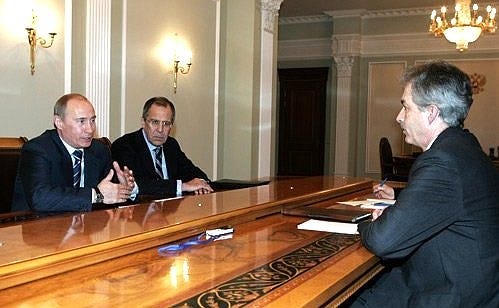
Burns clearly understood that Ukraine’s entrance into NATO would trigger a military response fropm Russia. In order to emphasise his concerns, Burns followed up his memo with an email to his boss, Secretary of State Condoleeza Rice:
“Ukrainian entry into NATO is the brightest of all redlines for the Russian elite (not just Putin). In more than two and a half years of conversations with key Russian players, from knuckle-draggers in the dark recesses of the Kremlin to Putin’s sharpest liberal critics, I have yet to find anyone who views Ukraine in NATO as anything other than a direct challenge to Russian interests.”
The Burns correspondences are key to understanding the origins of the current conflict in Ukraine. They show that the US knew that offering NATO membership to Ukraine and Georgia would most likely trigger a military response from the Russians.
2. Bush “lays down a marker” in Bucharest
Two months after Lavrov’s stern warning to Burns, the NATO members had their summit in Bucharest, Romania. Bush, who was at his last NATO summit meeting as President, was described by the official as wanting to “lay down a marker” for his legacy.
The Germans, French, Italians, Hungarians and the Benelux delegates were against offering NATO membership. Angela Merkel is said to have uttered that Ukrainian NATO membership would mean war with Russia.
But Bush, being the President of the United States, overrode his allies’ objections, and so Section 23 of NATO’s Bucharest Summit Declaration expressed the impending membership for Ukraine and Georgia in no uncertain terms:
“NATO welcomes Ukraine’s and Georgia’s Euro-Atlantic aspirations for membership in NATO. We agreed today that these countries will become members of NATO”.

In fact, Saakashvili was completely “westernised”. He had completed his graduate studies in France, Italy, and the Netherlands and at Columbia University in New York City. He even worked for a New York law firm in the 1990's.
Once in power, Saakashvili set about radically altering the Georgian economy in a way that must have made his American handlers proud. He appointed Kakha Bendukidze, a renowned libertarian and flat tax zealot, as the Minister of Economy to implement economic liberalisation and rapid privatization. As Wikipedia notes:
“On the economic front, Saakashvili pursued a neoliberal policy: abolition of the minimum wage, dismissal of 60,000 civil servants, lowering of corporate income tax from 20% to 15%, and dividend tax from 10% to 5%. In 2009, Forbes ranked Georgia as the fourth country with the lowest tax burden in the world”.
Saakashvili immediately became a darling of the Neocons in Washington. Warmongers like John McCain championed him as a stalwart anti-Russian leader.

Saakashvili made no bones about his desire to integrate Georgia into the US sphere of influence. Immediately upon taking office in 2004, he sent Georgian troops to Afghanistan to support the US/NATO mission there. In fact, Georgia became the largest non-NATO contributor of troops to the war in Afghanistan in terms of per-capita deployment.
Georgia started training heavily with NATO. US troops poured into the country, creating the Georgia Sustainment and Stability Operations Program, a military buildup that purported to help prepare Georgia to better support NATO in the Iraq and Afghanistan wars.
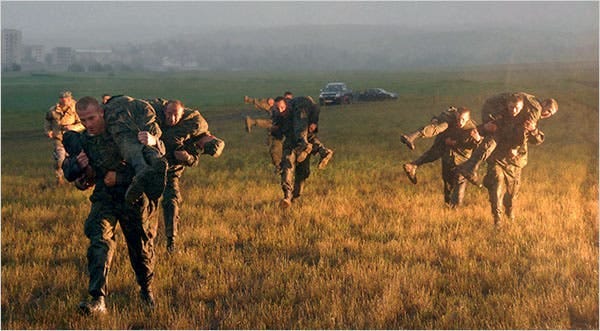
Georgia even became a major participant in the US bioweapons research program, similar to what was done in Ukraine. The Saakashvili regime started working closely with the US Defense Threat Reduction Agency (DTRA) under the Nunn-Lugar Act of 1991.
The Nunn-Lugar Act funded facilities to co-opt and develop Soviet biological weapons programs and develop new programs in the ex-Soviet territories — especially Ukraine and Georgia. The US bio facilities in both countries have been deeply criticised as dangerous”dual use” labs by the Russian Federation.

Given the unprecedented level of cooperation he was displaying towards Washington, Saakashvili must have grown ever more close to his American overlords, confident that they would “have his back” if it ever came to a shooting war with his giant Russian neighbour to the north — a prospect that seemed ever more likely after Saakashvili was only narrowly re-elected in 2008.
“Breakaway pro-Russian provinces”
This was because Saakashvili had inherited a problem: pro-Russian separatists in the so-called “breakaway provinces” of South Ossetia and Abkhazia located on Georgia’s northern border, which it shares with Russia.
Like Luhansk and Donetsk, the Eastern oblasts of Ukraine, these two regions in Georgia are filled with Russian speakers who had strong ties to both Russia and the Soviet Union, when both Russia and Georgia were “fraternal” Soviet Socialist Republics (SSRs).
However, like Western Ukraine, greater Georgia itself had resisted Sovietisation, establishing itself as the Democratic Republic of Georgia before being invaded by the Red Army and forced into becoming a SSR in 1921.

Both South Ossetia and Abkhazia had enjoyed autonomy under the USSR and want their independence back. Russia under Putin wanted to protect the rights of the Abkhazians and Ossetians and help them gain their independence (which Russia and 6 other nations eventually recognised in November 2008).
Russian peacekeepers had been stationed in both provinces since 1992.
Tensions between Tbilisi and the two regions had been brewing for decades — ever since the fall of the USSR — when Saakashvili came into office, and they eventually boiled over as the “lunatic” started his second term as President.
War breaks out
On August 7, 2008, after a week of border clashes, Saakashvili launched a military attack against South Ossetia, the “pro-Russian breakaway province” suing for independence from Georgia.
Sound familiar?
Unlike in Ukraine, however, there was no doubt anywhere about who had started the war. The conflict was started by Saakashvili, whom Russian President Dimitry Medvedev once described as a “lunatic”.
Georgian troops started shelling Ossetian villages, killing ethnic South Ossetian civilians, and prompting a massive Russian response that included a large-scale land, air, and sea invasion of Georgia, with the Russian Black Sea fleet blockading the Georgian coast.

RadioFreeEurope summed up the situation, noting that “questions have persisted about the caliber of Saakashvili’s decision-making:
“The Georgian leader used international media appearances to regularly upbraid both Moscow for its aggression and the West for its inertia. But his position was weak. Georgia, by nearly all indications, had acted first. Saakashvili had personally ordered troops into South Ossetia, granting Russian forces stationed just outside the Russia-Georgia border the pretext they needed to enter the country and start shooting back”.
Nonetheless, the Western media went into panic mode, decrying what they immediately called a “full-scale invasion” by Moscow.
NATO had poked the Russian bear, and they saw the reaction. Russia even sent a huge convoy of vehicles to threaten the Georgian capitol, Tbilisi.
Again: sound familiar?

It is widely believed that Saakashvili had been “led up the primrose path” by American Neocons like John McCain. Indeed, the Georgian President was on the phone with the US Senator every day during the conflict.

“We are all Georgians now”
Saakashvili no doubt had counted on the US entering the war to help Georgia beat the Russians, telling CNN:
“Yesterday, I heard Sen. McCain say, ‘We are all Georgians now.’ Well, very nice, you know, very cheering for us to hear that, but OK, it’s time to pass from this. From words to deeds.”
The Georgian President went on to make some very Zelensky-sounding pronouncements:
“We should realise what is at stake here for Americans,” Saakashvili told CNN. “America is losing the whole region.”
Does this not sound like one of Volodymyr Zelensky’s rants?
After 10 days, a cease-fire was negotiated, and the Russians pulled back from Georgian territory, and satisfied themselves with occupying the “break-away republics” of South Ossetia and Abkhazia.
Georgian parliament takes on “colour revolution” organisers
Fast forward to TODAY: the Georgian Parliament is in the process of passing a “Foreign Agent Registration” law. This is a law that is modelled after the FARA laws in the United States.
The proposed law says that organisations that operate in media, society or politics on behalf of “foreign interests” must register as foreign agents and disclose their funding sources and other information if they receive more than 20 per cent of their budget from abroad.
The law is aimed at preventing the CIA, NED, MI6 and other western intel “cutouts” from creating pro-Western, anti-Russian “movements” or “revolutions” in Georgia to split it away from Russia like the Maidan Coup did in Ukraine.
Accordingly, the European Union, United States, NATO and other Western powers are violently opposed to the new Georgian law, and are organising vast demonstrations against what they are calling a “Russian law”.
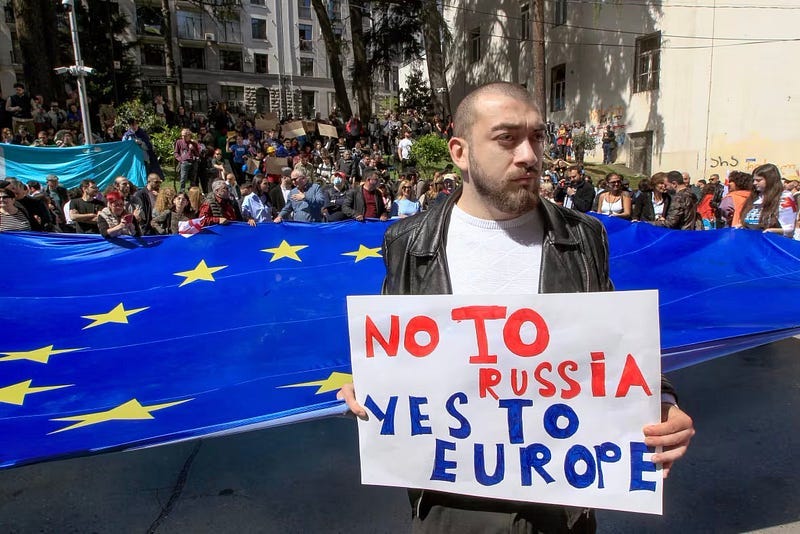
Before Georgia, there was Serbia
There can be little doubt that the US involvement in Georgia was just a prelude to the main event, which was planned for Ukraine.
But before Georgia, there was Serbia.
Starting after the 1999 NATO destruction of Yugoslavia, the US created a campaign in Belgrade, which ran from 1999–2000, which was the first of a string of so-called “colour revolutions”.
Known colloquially as the “Bulldozer Revolution”, its aim was to take down the pro-Russian Serbian leader Slobodan Milosevic and replace him with a pro-Western leader.
And it succeeded!
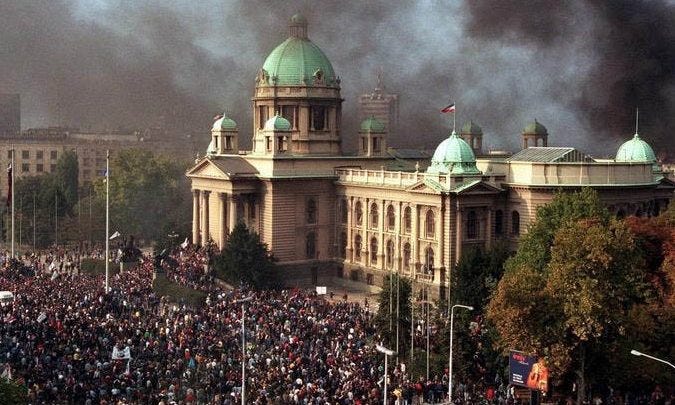
The experience that the US team gleaned from their experience in Serbia was key to Saakashvili’s success in Georgia. As legendary reporter Ian Traynor described in The Guardian in 2004:
“Before becoming president in Georgia, the US-educated Saakashvili travelled from Tbilisi to Belgrade to be coached in the techniques of mass defiance”.
Richard Miles, the US State Department’s Chargé D’Affaires (“Chief of Mission”) in Belgrade, was no doubt also a highly placed CIA agent who played a key role in organising the Bulldozer Revolution.
Traynor explains that when Miles went on to become US Ambassador in Tbilisi in 2002, “he repeated the trick in Georgia, coaching Mikhail Saakashvili in how to bring down Eduard Shevardnadze”.

Traynor goes on to identify the major players in these “revolutions” that were playing out in post-Soviet societies:
“The Democratic party’s National Democratic Institute [headed by Madeleine Albright], the Republican party’s International Republican Institute [headed by John McCain], the US State Department and USAid [aka CIA] are the main agencies involved in these grassroots campaigns as well as the Freedom House NGO and billionaire George Soros’s Open Society Institute.
“US pollsters and professional consultants are hired to organise focus groups and use psephological data to plot strategy”.
So — Saakashvili was anything but a “home-grown” pro-democracy candidate. He was a creature of the United States, and his successful Presidential campaign was funded and organised by the US government, deploying US consultancies, pollsters, diplomats, the two big American parties and US non-government organisations backed by the CIA.
Lessons learned in Georgia
Georgia and Ukraine were similar, but not exactly alike. Firstly, although Putin felt responsible to protect the Ossetians and Abkhazians, it was because they were former Soviet citizens and did not see themselves as Georgians. However, unlike the Eastern Ukrainians, they were NOT ethnically Russian. In fact, only small minorities were Russian.
Nonetheless, the people in both regions were loyal Soviets, and when in 2002 Putin simplified the procedure for ex-Soviet citizens outside of Russia to acquire Russian passports, the Ossetians and Abkhazians did so en masse. This “passportisation” caused outrage in Tbilisi, and contributed to the tensions with Russia, while strengthening the ties between the breakaway provinces and Mother Russia.
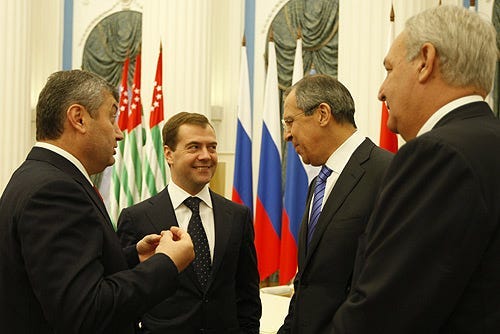
Perfecting the recipe for regime change
Following the success in Serbia, the Georgia political experiment proved to the US and its allies that regime change could be effected through a “colour revolution” backed by youth movements and other societal factors funded, organised and led by Western NGOs (most of which were “cut-outs” of CIA and MI6).
Of course, regime change doesn’t come cheap. The US spent $41 million to overthrow Milosevic. By the time it was Ukraine’s turn, the US had invested over $5 billion to “promote democracy” in the lead up to the 2014 Maidan Coup.
How to provoke Putin
The other big lesson learned from Georgia was that Vladimir Putin could be provoked to military action when he feels that “the Russian nation” is being threatened — and by Russian nation this means all people who consider themselves Russian, either officially, ethnically or religiously.
In the case of Ukraine, the populations of the Donbas made for an irresistible lure with which to bait the Russian leader into an invasion that could be leveraged against him.
WHY the US wanted a “Moscow Maidan”
Serbia and Georgia were simply warm-ups for the “main event”, Ukraine. This is because the US has considered Ukraine the key to defeating Russia since at least 1997, when Zbigniew Brzezinski, who had served as Jimmy Carter’s National Security Advisor, published a book entitled The Grand Chessboard. In it, Brzezinski presents Ukraine as the pivotal country for defeating Russia, declaring that:
“Ukraine is the critical state, insofar as Russia’s future evolution is concerned. Without Ukraine, Russia ceases to be a Eurasian empire.”
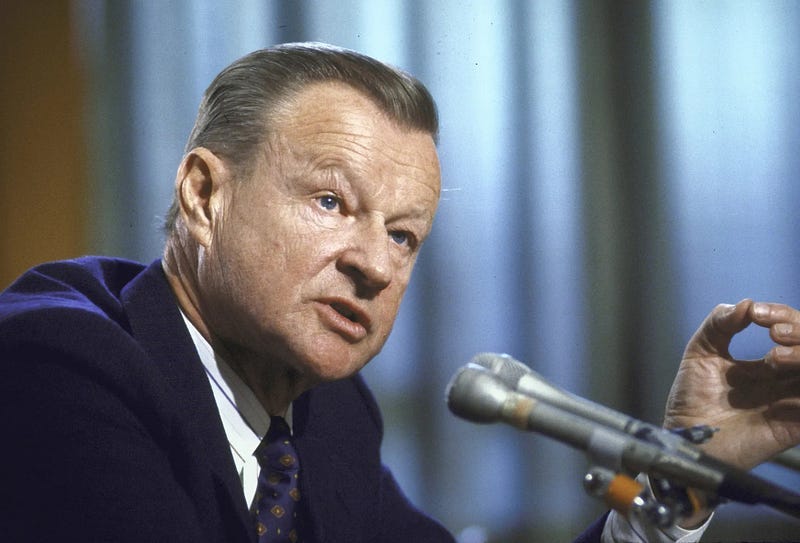
Thus, the goal of US foreign policy for the past three decades has been to “pry” Ukraine away from Russia. This would inflict a strategic defeat on Russia, leading to a regime change in Moscow (a “Moscow Maidan”) and the “dissolution” (per the Hudson Institute) or “decolonisation” (per the US U.S. Helsinki Commission) of the Russian Federation itself.
The US and its Western allies could then — finally — carve up the carcass of the once mighty Soviet Union, completing the financial and economic rape of Russia that they had started in the 1990’s after the fall of the USSR, when Boris Yeltsin opened up the country to exploitation by Western financial interests. I wrote about this strategy in the following article:
Slaughtering Russia is U.S. Policy
American policy makers have been planning to “carve up” the Russian Federation for years. And Putin is right to use the…euroyankeeblog.medium.com
Making Ukraine want NATO membership
In Georgia, the Rose Revolution resulted in the US-trained Saakashvili taking power. In Ukraine, however, while the 2004 Orange Revolution (aka the “Chestnut Revolution”) succeeded in putting the pro-Western Viktor Yushchenko in power, the revolution did not last.
While Western constructs like NATO and the European Union were popular among the kids who flooded the Maidan Square, they were not so beloved by the greater population.

The Ukrainian people, spurred primarily by the ethnic Russians living in the Eastern oblasts, rejected the idea of joining the EU and NATO.
The result was that in the following Presidential election of 2010, Ukrainians elected the pro-Russian Viktor Yanukovych.

The above electoral results map clearly shows a divide. Like the USA, Ukraine is split into “red states” and “blue states”, only the chasm that separates the two camps is much greater, and is all about Russia and NATO.
When Ukrainians said “NO” to NATO
A September 2009 survey by the Pew Research Center’s Global Attitudes Project, found that half of Ukrainians (51%) opposed their country’s admission to NATO, while only 28% favoured such a step.
A later poll by GALLOP in 2010, after the election, showed the support for NATO was split along similar lines as the election itself:

The stubborn fact facing Victoria Nuland, Joe Biden and the other Neocons in Washington was that the majority of Ukrainians — especially those who lived in the Eastern provinces that bordered Russia — were distrustful of NATO and preferred to maintain friendly relations with Russia.
The Ukrainian divide emerges
In fact, the only place where NATO was popular — and Russia was not — was in the Western part of Ukraine, the region called Galicia, which was formerly part of the Austro-Hungarian Empire and was Catholic rather than Orthodox.
Western Ukrainian cities like Lviv (a city which, under its former name of Lemberg, had served as the capital of Austrian Galicia) were populated with people who still held Ukrainian nationalist beliefs, who revered Stepan Bandera and hated all things Russian.
These were the people whose forefathers had served in the Nazi Waffen SS — the kind of Nazis that were recently celebrated in Canada for having “fought against Russia in World War II”.

“These fanatical Ukrainian “ultranationalists” were the perfect catspaws for the US Neocons and especially the CIA.
“The only problem was that there were just not enough of them to seize power through elections”.
Read more:
The solution: a Maidan Coup in 2014
In order to succeed with their strategy to “weaken” Russia and overthrow Putin, the US needed to transform Ukraine from a “fraternal” nation at peace with its Russian neighbour into a militant anti-Russian bulwark on Putin’s doorstep; a nation eager to join NATO and host American and Western European armies (and missiles) on its soil.
Such a transformation could only happen via a “revolution” that would impose the will of the pro-NATO, Catholic, Western Ukrainians on the majority of pro-Russian, Orthodox Ukrainians who dominated in the rest of the country.
But, unlike in Serbia and Georgia, the US could not install its preferred puppets in Kiev through an elaborate and well-funded “colour revolution”. They had tried that in 2004 and failed.
“What the US needed in Ukraine was what it had so successfully done all throughout Latin America and the Middle East: a good, old-fashioned coup d’état”.
Setting a violent tone — with help from Georgia
What started out as a peaceful protest to call for EU integration became a violent putsch powered by a variety of far-right neo-Nazi militias who had been recruited by the US State Department and CIA to bait the government forces into a crackdown.
“The turning point came on on 20 February 2014, when over 100 young protesters and a dozen police officers were shot and killed by snipers”.
The Maidan protest leaders instantly accused the Yanukovych government of deploying the snipers, however evidence has proven that the snipers were firing from Maidan controlled locations.
“14 self-admitted members of Maidan sniper groups testified that the massacre of the police or protesters was perpetrated by the Maidan snipers. They include testimonies by seven self-admitted Georgian members of Maidan sniper groups for the Maidan massacre trial and investigation…These Georgians stated that they, along with others from Georgia, the Baltic States, and Ukraine, were members of the Maidan sniper groups”.
The use of Georgian snipers to foment rebellion in Ukraine makes perfect sense, given the long history of US meddling in Georgia, the extensive US troop training, the Afghan deployment and the many covert ops that had been launched there over the years.
Deploying Nazi muscle to kick things up
The Maidan Coup was reinforced through the deployment of violent, neo-Nazi ultranationalists. Groups like Right Sector and C14, which are Nazi militias loosely tied to the far-right Svoboda political party, started cracking heads and attacking the police.
They also provided menacing support for the “opposition” leaders calling for an overthrow of the Yanukovych government and indeed physically threatened the President himself — to the point where Viktor Yanukovych, the duly elected President of Ukraine, had to flee the country in fear for his life.
Read more:
Yevhen Karas, the leader of C14, took credit for the success of the Maidan protests:
“LGBT and foreign embassies say ‘there were not many Nazis at Maidan, maybe about 10 percent of real ideological ones,’” Karas remarked. “If not for those eight percent [of neo-Nazis] the effectiveness [of the Maidan coup] would have dropped by 90 percent.
“The 2014 Maidan “Revolution of Dignity” would have been a “gay parade” if not for the instrumental role of neo-Nazis, he proclaimed”.
Maidan result: a very predictable civil war
The overthrow of Yanukovych in a violent coup did not sit well with many Ukrainians, especially the Eastern Ukrainians who were against NATO and the EU and wished to remain friendly with Russia.
And thus, the civil war that Lavrov had warned Burns about in 2008 came to pass.
Colonel Jacques Baud of the Swiss Intelligence Service has put together some slides that describe the situation leading up to the launch of Putin’s Special Military Operation. Baud, who was an official monitor of the conflict line between the Ukrainian forces and the rebel groups in the Donbas, explains the origins of the conflict and the steps leading up to Putin’s SMO.
Firstly, Baud explains, the Eastern provinces of Ukraine rose up in protest:

These protests then became movements towards independence, and multiple “People’s Republics” were self-proclaimed in the six months following the Maidan Coup in Kiev:

How the US “predicted” a Russian incursion
In the months leading up to the launch of Russia’s “Special Military Operation”, the Biden White House conducted what was widely described as an “unprecedented public campaign” that claimed to “predict” that Putin would make a move to invade Ukraine.
“President Joe Biden predicted Wednesday that Russia will invade Ukraine…“My guess is he will move in, he has to do something,” said Biden during a news conference marking his first year in office, referring to Russian President Vladimir Putin and Ukraine”.
These predictions were directly attributed to the “often criticised” US intel services. Their predictions were repeated, however, and the people who were forecasting a Russian invasion seemed increasingly sure of what they were predicting.
What made the US intelligence services so sure of themselves?
One word: GEORGIA.
The US experience in Georgia had proven that when Putin believed that “Russian people” were under attack, he would move in to rescue them.
Since 2014, Ukrainian forces had been slaughtering ethnic Russians living in Eastern Ukraine, especially the regions in the Donbas, Donetsk and Lugansk. The OSCE, which had been dispatched to monitor the conflict, estimated that during the period 2014 to 2022, over 14,000 people had perished in the fighting between the Ukrainian forces (mostly Nazi militias) and the Russian separatists. Moreover, the OSCE reported that the vast majority of those who died were civilians in the breakaway republics.
The US and its allies knew that Putin would have to react sooner rather than later to “save” the thnic Russians in the Donbas. In fact, Putin was already under severe criticism and pressure from the Duma members whose constituents had relatives in the war-torn Donbas.
Ukraine goes for broke
Starting on 14 February, the Ukrainians “upped the ante” with a massive increase in shelling (and killing) along the line of contact in the Donbas. This was widely reported at the time by media outlets such as The Economist:

Jacques Baud also covers this “explosion” in violence in the Donbas, noting that he and his fellow observers saw that the explosions recorded were almost all from the Ukrainian side.
The 3500% increase in attacks made clear that Ukraine was about to strike.

Putin reacts
Faced with mounting domestic pressure in the Duma, Putin finally reacted in the way the US intel services had predicted.
“Russia’s parliament has overwhelmingly voted to ask President Vladimir Putin to formally recognise two breakaway “republics” in the Donbas region of southeastern Ukraine — a move that would drive a nail through the 2015 cease-fire deal between Ukraine and Russia.
“‘Kyiv does not comply with the Minsk agreements. Our citizens and compatriots living in Donbas need help and support,’ Duma Speaker Vyacheslav Volodin said on Telegram after the vote Tuesday”.
Moreover, Russian media and civil society wanted action, according to The Guardian:
“Hawkish officials and prominent figures in Russia such as the head of RT, Margarita Simonyan, have called for recognition of the regions’ independence”.
And so the US and its Western allies got the war in Ukraine that they always wanted.
Ukraine’s leaders also wanted war with Russia
It was not just the US and NATO that wanted a war with Russia. The ultranationalist leaders who took over in Kiev following the Maidan Coup all wanted a war with Russia.
The Ukrainians had several reasons for wanting a war with Russia. Firstly, the idea of killing their arch enemies, the dreaded Muscovite “cockroaches”, was a worthy goal in and of itself for any Ukrainian nationalist. They were eager to take up where their Nazi SS forefathers had left off.
But there were also strategic imperatives that made war with Russia necessary. As military analyst and historian Jacques Baud explains in his book, Ukraine Between War and Peace, Ukrainian leaders knew that in order to for them to join the European Union, they would need to join NATO.
More importantly, they also knew that in order to join NATO, they needed to defeat Russia in a war.
As historian Jeffrey Sachs explains:
“Ukraine’s leaders knew clearly that pressing for NATO enlargement to Ukraine would mean war. Former Zelensky advisor Oleksiy Arestovych declared in a 2019 interview “that our price for joining NATO is a big war with Russia’. “
Here is a clip of that interview:

As Arestovych explains, NATO cannot accept Ukraine as long as Ukraine is in conflict with Russia. Therefore, the “coolest thing” would be, as Arestovych puts it, “a large scale war with Russia and joining NATO as a result of defeat of Russia”.
So, by provoking a “big war with Russia”, the Ukrainian nationalists in power in Kiev could achieve their objective of killing Russians and thereby joining NATO and the EU.
The United States could also achieve its objective of inflicting a strategic defeat on Russia that would lead to regime change in Moscow and the subsequent “dissolution” of the Russian Federation.
It’s a win-win for Ukraine and the West.
WHY the West thought they could win
Today, with Western media headlines decrying the imminent collapse of the Ukrainian front lines, with NATO’s weapons and ammunition stocks depleted — in some cases to zero, and with the Russians gaining ground day by day, it is hard to think back to 2022, when the collective West was so sure that Russia was on the verge of collapse.
Russian industry was “in tatters”; Russians were fighting with shovels; Russia had to steal chips from washing machines to use in their weapons systems; and President Putin was facing a “palace coup”.

The truth is, none of that was ever real. All those stories were pure propaganda, 100% fabricated, and yet the media believed it, and Western leaders believed it.
They believed it because they wanted to believe it.
As Jacques Baud explains, Western audiences “were used to underestimating the Russians”. As I explained in my article, “How the West Descended Into Idiocy”:
“The Western populations have been force fed a steady diet of anti-Russian and anti-Putin propaganda for decades, and all those propaganda chickens are now coming home to roost”.
Americans especially were treated to bipartisan denigration of Russia. Barack Obama famously opined that “Russia doesn’t make anything”.

Senator John McCain was even more deprecatory: “Russia is now a gas station masquerading as a country”, he huffed.

The “two-week war” that wasn’t
When the long-awaited war in Ukraine finally arrived, Western leaders expected it to end quickly. After all, NATO had abandoned its arms buildup after the fall of the USSR and the end of the Cold War. The NATO armies were trained and equipped for “boutique” military adventures such as they had done in Serbia, Libya, Iraq and Afghanistan.
NATO and the West were simply no longer prepared for any modern, force-on-force land war in Europe. They didn’t think they needed to be. Russia was a house of cards, a weak nation with a struggling, primitive economy that would collapse under the “unprecedented” sanctions the US and its allies had imposed.
The US Neocons and NATO leaders believed it would all be over in a few weeks, if not a few days, and Russia would be defeated economically, militarily, and psychologically.
But this is where the West made a big mistake, according to Jacques Baud. They failed to realise that, far from being a small economy Russia had a large economy when measured by “purchase power parity”.
Moreover, Russia had practically no debt. Under Putin’s deft stewardship, Russia reduced its national debt to just 17% of GDP.
What does that mean? Well, by contrast, the US debt is 129% of GDP. Indeed all Western countries have debt levels that are well above 100% of their GDP.

These two factors made the Russian economy extremely resilient. according to the Financial Times.
Moreopver, the Russian economy is much bigger than most Western sources claim. In fact, when measured by PPP, Russia’s economy is larger than that of France and the UK.
What the West has reaped: CATASTROPHIC failure
History will no doubt judge the Western powers — and especially the United States — in the harshest of terms. Never has there been such a catastrophic failure in global affairs. By every measure, in every way, what the Western powers predicted has failed to materialised, and indeed has resulted in a reverse outcome from what was planned.
Boomerang sanctions
The US-led sanctions levied on Russia backfired completely. Russia’s economy only grew stronger and even more resilient thanks to the sanctions, whereas the Western powers saw their economies plunge into recession and, in cases like Germany, catastrophic de-industrialisation.
Certainly the destruction of the Nord Stream pipeline in September 2022 will have lasting catastrophic effects for Germany and Western Europe.
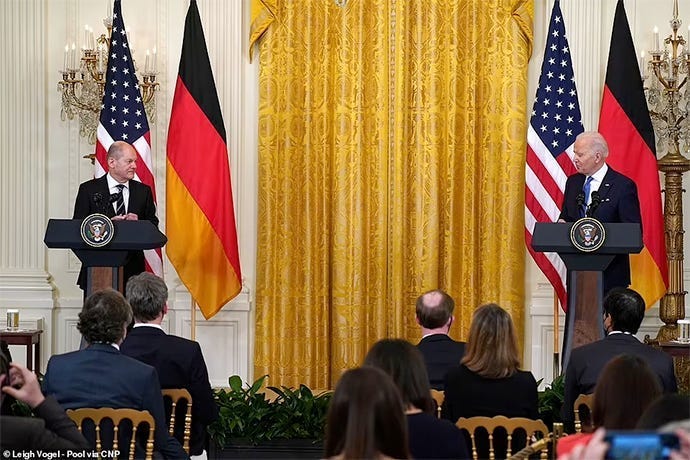
A stronger, more popular Putin
Rather than lead to a “Moscow Maidan”, the war in Ukraine and the failed sanctions regime have only served to make Vladimir Putin even stronger, as the Russian people rally behind their leader in what they have come to see as another “Great Patriotic War” arising from yet another threat from the West.
Indeed, Putin’s popularity, according to the Levada Analytical Center, a US-based polling organisation funded by the National Endowment for Democracy (NED), s now at a stunning 87%, a level not seen in the West since US President Franklin Roosevelt at the height of World War II.

Political suicide for Western leaders
Western leaders and their media minions have been predicting the fall of Vladimir Putin for years, but the result of Project Ukraine will actually lead to the political demise of those very same leaders.
Political figures like Joe Biden, Olaf Scholz, Emanuel Macron, Rishi Sunak, Justin Trudeau, and Ursula Von der Leyen all face popularity ratings that are less than 40%. In fact, the widespread phenomenon of unpopularity among Western leaders is now itself a major news story.

The destruction of NATO
It now seems even doubtful whether NATO will survive the Ukrainian debacle. Indeed, the mad rush by new members to join the alliance, triggered by an irrational fear of “Russian aggression”, has only served to prove how unwieldy, impractical and outdated NATO is. It seems certain that once Ukraine is over, the members will desc end into bickering and disunity — indeed, it’s already happening.
The much vaunted Wunderwaffen provided by NATO to Ukraine have all proved to be paper tigers — from the Patriot air defense systems to the Leopard and Challenger battle tanks, the Russian military has shown all of the best Western weapons systems to be as ineffective as they are vulnerable.
And of course, NATO is now almost completely out of ammunition, and all of NATO’s combined forces would not last even a week in combat against Russia.

Where we are now
By now it should be obvious that Russia has won this war. NATO is depleted. Ukraine is all but destroyed.
It is now a question of just how much of Ukraine Russia wants to take.
For his part, Putin continues to be open to peace talks, but such negotiations will need to be based on the “realities on the ground”.
Those realities dictate a total and complete capitulation of Ukraine.
I honestly do not know what Putin will demand of Ukraine in any sort of peace agreement. I only know that whatever is negotiated will be similar to what the United States demanded of Imperial Japan at the end of World War II.

#End
If you liked this post, please consider leaving me a tip! Donations support my independent, ad-free writing.
============================================================================
ADDITIONAL READING:






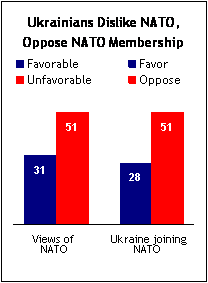
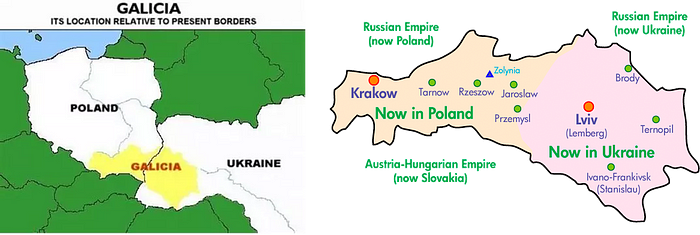
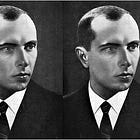


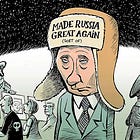





This is an excellent and comprehensive post.
However I think you underestimate the depravity of the mis-leaders of the US and their NATO vassals. I think they are willing to sacrifice also the lives of their own people, just as they have sent half a million Ukrainians to their slaughter.
I think they are also depraved enough to risk a nuclear war and think they might "win" by going into bunkers, seeing most people die and emerging in a nuclear wasteland.
I don't know about how it is where you live, but in the NATO country where I am I see that the government has been quietly polishing up emergency laws, and refurbishing government war bunkers and building new ones. At great expense.
The bunkers that would be needed by millions and millions of citizens in a war? F-all been done.
They believe they can use tens and hundreds of millions of lives as sacrificial pawns.
Do not underestimate their depravity. You are thinking like a decent and alogical person would think about the strategy here - the war has been lost, it has to come to an end. But these are not decent or logical people.
Look here at the 2nd to last table:
Overextending and Unbalancing Russia Assessing the Impact of Cost-Imposing Options
Published Apr 24, 2019
https://www.rand.org/pubs/research_briefs/RB10014.html
Option 3: Withdrawing from the Intermediate-Range Nuclear Forces Treaty
Option 4: Investing in new capabilities to manipulate Russian risk perceptions
And the conclusions and last table.
At this point....they are one by one, taking the high risk options, and many that are deceitfully labeled as "moderate" risk, but which in content of applying them to a nuclear armed country that is focused on defensive action, are in fact high risk.
These are very sick people and they don't mind sacrificing their own populations .